The man who created Sarajevo! Who was Gazi Husrev-beg?
n the labyrinth of Sarajevo’s streets, where the scent of oriental spices blends time with the wind descending from Trebević, one name has endured for nearly five centuries, Gazi Husrev-beg. Although widely known as the ktitor (a person who builds and permanently supports communal institutions using personal funds) of Sarajevo’s most famous mosque, his legacy extends far beyond architecture. Gazi Husrev-beg was a military commander, administrator, visionary, and a man of profound humanity whose presence is still tangible in every stone of Baščaršija. But who was this man, really, and why is he still considered the most important builder of Ottoman Bosnia?
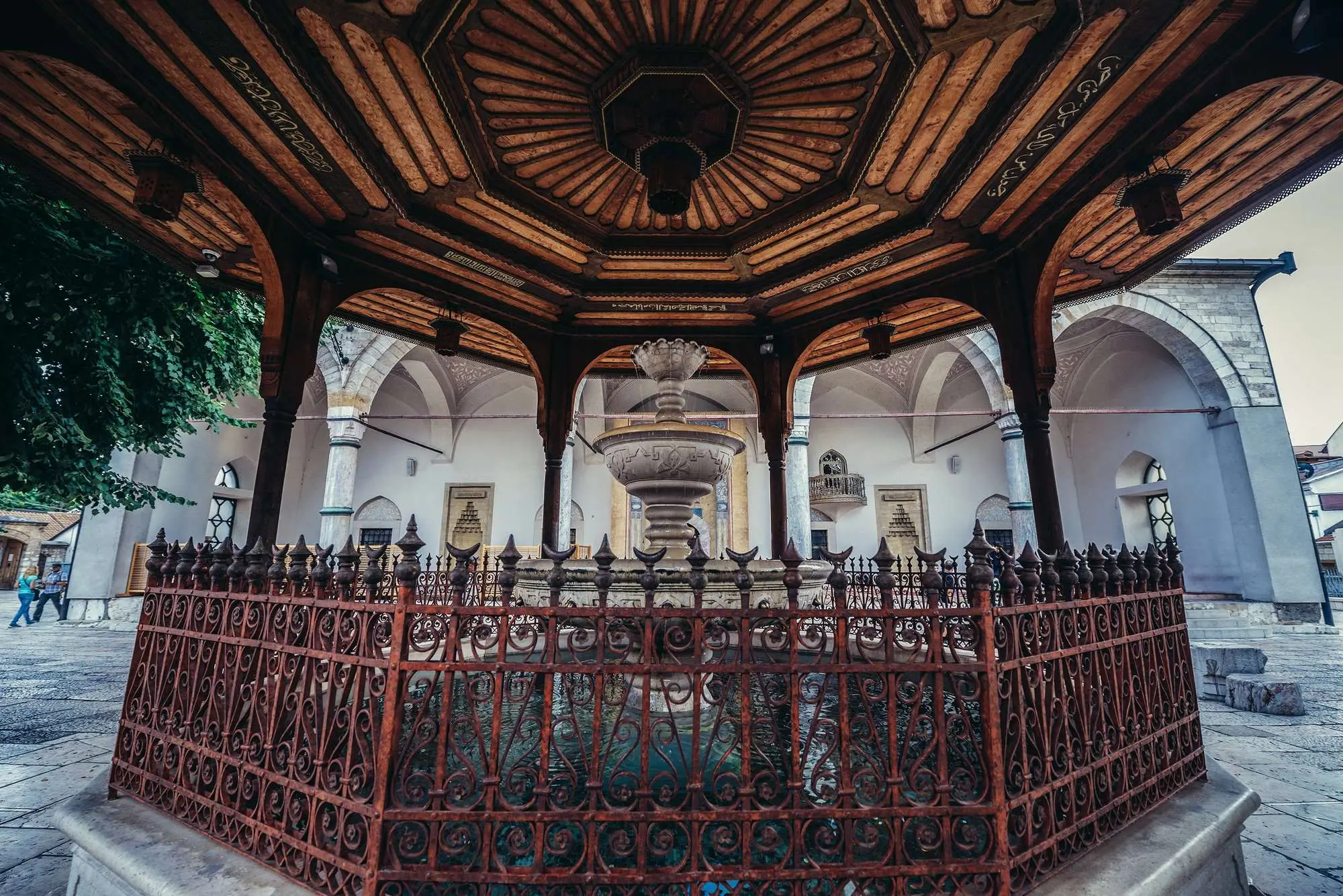
Gazi Husrev-beg Mosque, Photo: fotokon Depositphotos
BETWEEN IMPERIAL HALLS AND BOSNIAN BLOODLINES
Born around 1480 in the Greek town of Serres, Husrev-beg was the son of Ferhat-beg, a Bosnian nobleman from Trebinje, and the daughter of Sultan Bayezid II. The fact that his grandfather was a sultan and his father a local beg symbolizes the duality of his role: he bridged Istanbul and Bosnia, imperial authority, and local heritage. He grew up between royal courts and battlefields, educated and trained to serve the empire, yet deeply connected to the land of his paternal roots.
He quickly advanced through the ranks of the Ottoman military, distinguishing himself in campaigns in Hungary and Croatia, and he also took part in the famed Battle of Mohács in 1526. But what truly defined his legacy was his role as governor of the Bosnian Sanjak, a position he first assumed in 1521 and held, with brief interruptions, until he died in 1541. He became Bosnia’s longest-serving and most influential beg, not through military might, but through vision.
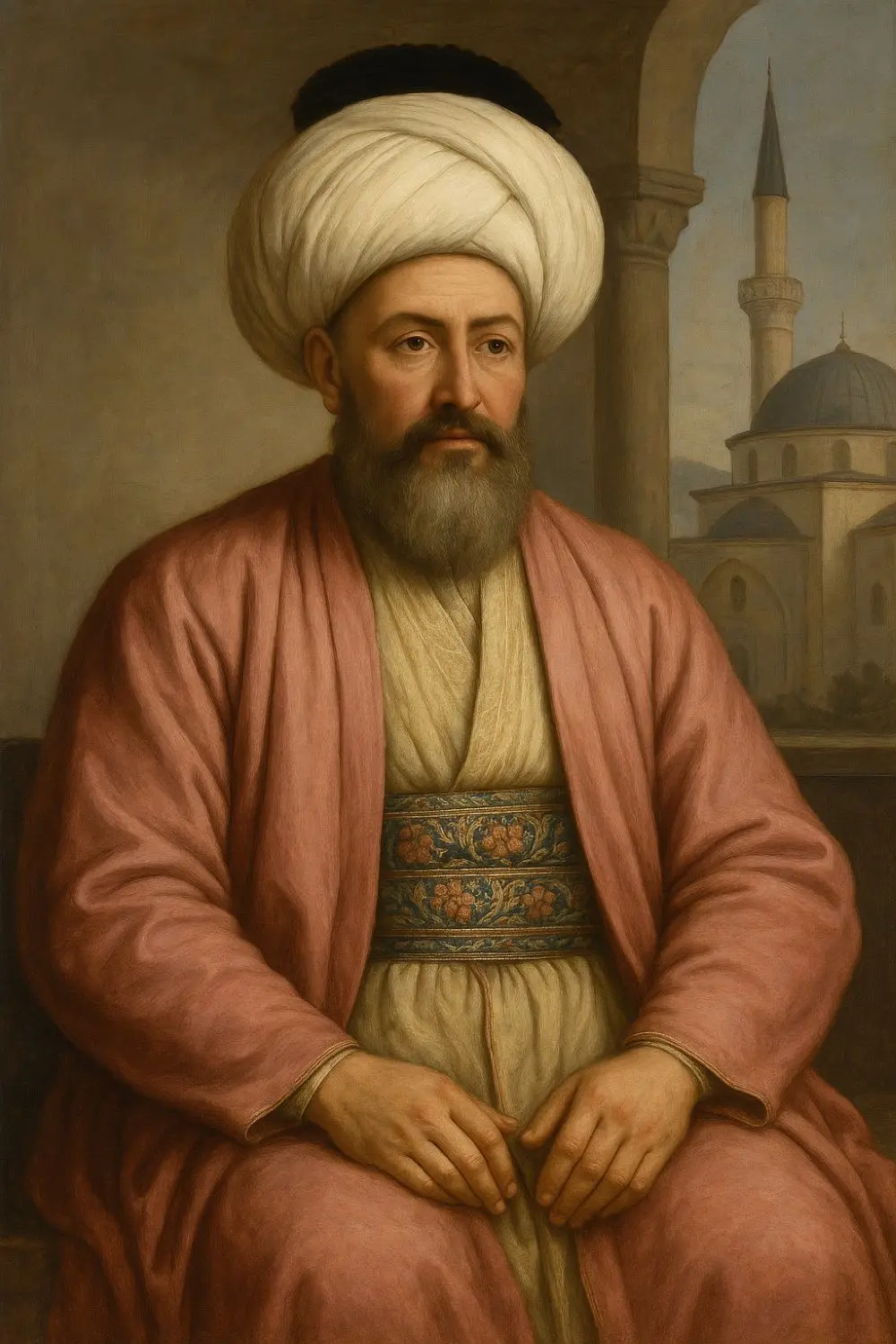
Gazi Husrev-beg, Illustration: AI reconstruction, ChatGPT
A CITY CARVED IN STONE
When Gazi Husrev-beg arrived in Sarajevo, the city was little more than a strategic Ottoman outpost on the road to the West. But what he accomplished over the following two decades transformed it into a thriving urban, religious, commercial, and educational center of the region.
The central symbol of that transformation became the Gazi Husrev-beg Mosque, completed in 1531. Designed by the Iranian master architect Acem Ali, it was the first monumental-style mosque in Bosnia and Herzegovina, and later became the first mosque in the world to be illuminated with electric light. Yet the mosque did not stand alone; around it grew an entire complex that functioned as the urban heart of Sarajevo.
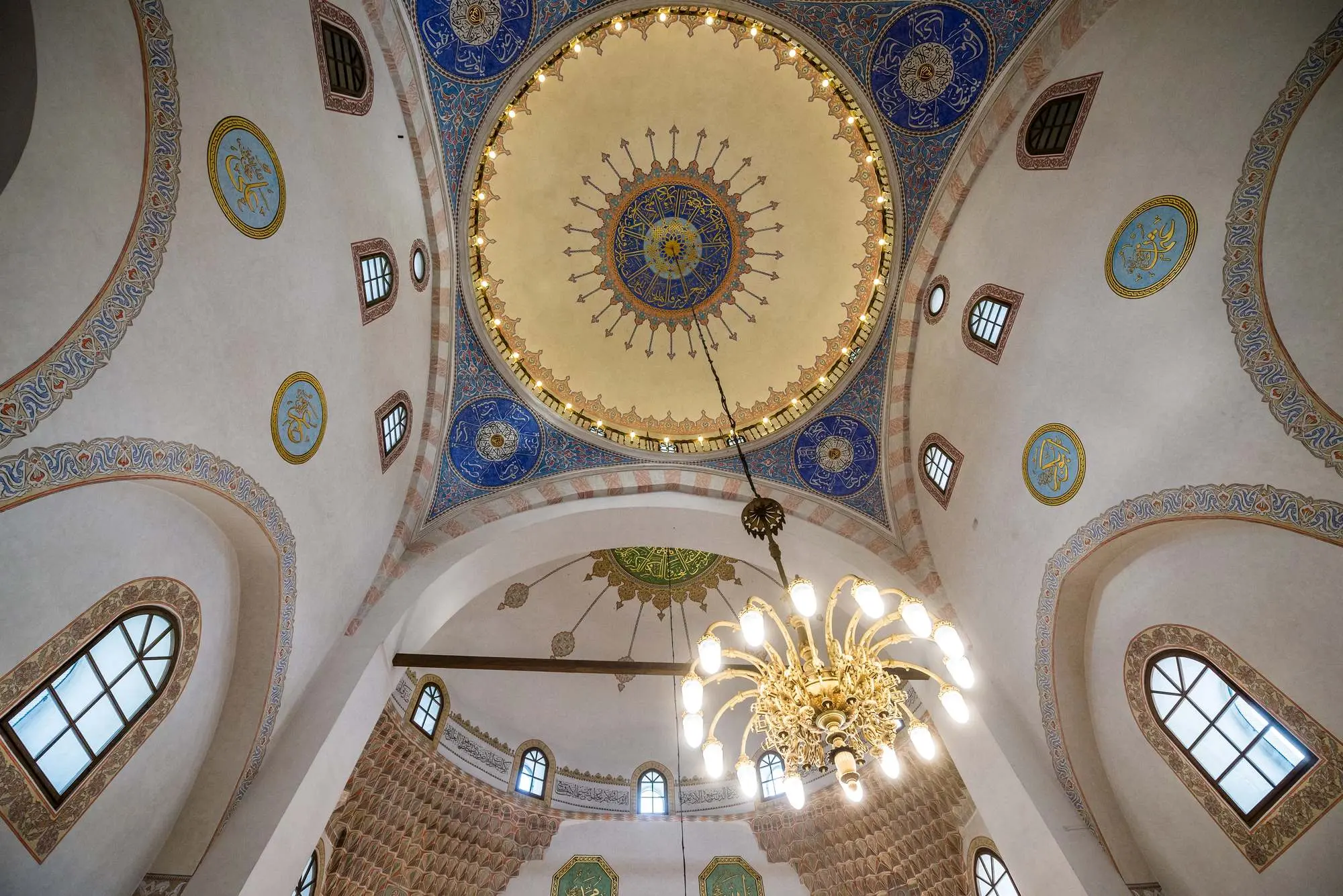
Gazi Husrev-beg Mosque, Photo: fotokon Depositphotos
Next to the mosque, he built the Kuršumlija Madrasa, which opened in 1537, named after its lead-covered roof (“kuršum” meaning lead). It served as a school for future scholars, imams, judges, and scribes, and it still operates today, nearly five centuries later. Within its framework also emerged the Gazi Husrev-beg Library, one of the oldest in the Balkans, housing hundreds of manuscripts and books from across the Islamic and Mediterranean world. Today, it has been fully restored and relocated to a modern building in the heart of Sarajevo’s Old Town.
But what truly set Husrev-beg apart from other builders was that he didn’t build solely for the elite. Alongside religious and educational institutions, he established an imaret—a public kitchen that fed hundreds of poor people, students, and travelers each day. Beside it stood a musafirhana (guesthouse for travelers), a muvekithana (a building for calculating prayer times), and even a hospital. His vision of the city was both inclusive and self-sustaining.
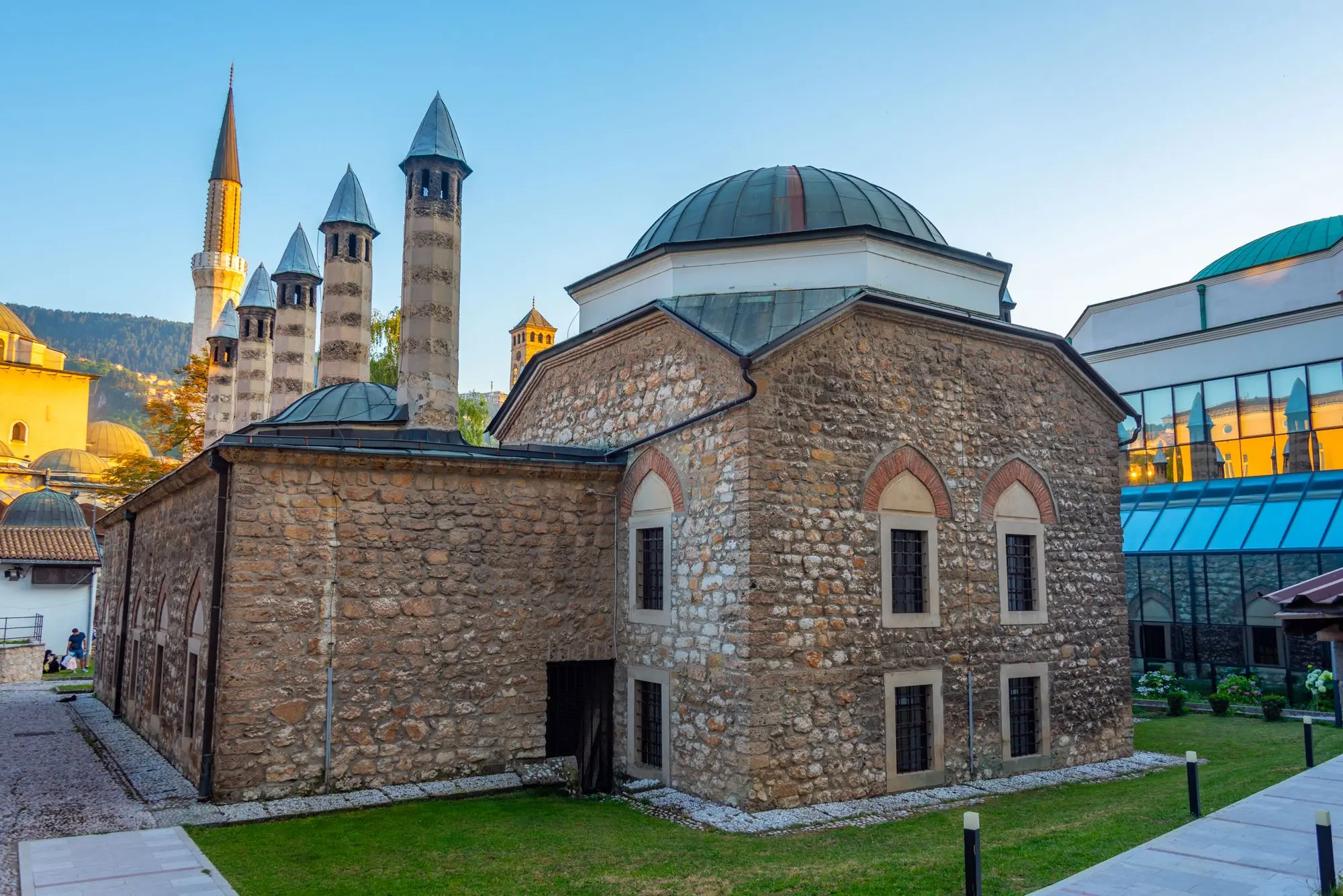
Gazi Husrev-beg Museum-Library Photo: Dudlajzov Depositphotos
THE TRADING LIFE OF SARAJEVO
Gazi Husrev-beg also transformed Sarajevo into a commercial metropolis. At the heart of this vision was the Bezistan, a covered market built in 1555 with over 70 shops, where silk, spices, jewelry, and fabrics from across the Ottoman Empire were traded.
His most ambitious project was the Tašlihan, a stone caravanserai built between 1540 and 1543, located next to the Bezistan. It had an inner courtyard with a fountain, two-story rooms, stables, and storage areas. It functioned as a hotel, warehouse, and marketplace all in one, and was one of the most luxurious hans in the Balkans. Unfortunately, a fire in 1879 destroyed it, and the remaining walls were demolished in 1912. Today, its foundations are integrated into the courtyard of Hotel Europe, still symbolically present where Sarajevo’s commercial heart once beat.
VAKUF, A SYSTEM THAT LASTS FOR CENTURIES
Husrev-beg did not build all this out of whim but through a sophisticated endowment system known as a vakuf. He directed the income from his shops, hans, fields, and even water supply toward the maintenance of these institutions. Over time, his vakuf became one of the richest and best-organized in the entire empire. Most importantly, it still exists today. The Gazi Husrev-beg Vakuf continues to maintain the madrasa, mosque, and library, as well as many scholarships and cultural projects.

Tašlihan, Photo: SnapTPhotography Depositphotos
THE MAN WHO LEFT A CITY BEHIND
Gazi Husrev-beg was killed in 1541 in Mokro, near the present-day border with Montenegro. His body was brought back to Sarajevo and buried in the turbe next to the mosque. Even today, people stop there, quietly recite the Fatiha, or simply pause before the gravestones, because it is hard to walk through that part of the city without feeling the presence of someone who quite literally built it.
SARAJEVO TODAY, THE ECHO OF A VISION
Every stone in Baščaršija, every corridor of the madrasa, every manuscript in the library, every vendor in the bezistan, they are all part of a grand idea once imagined by Gazi Husrev-beg. His legacy is not only material, it is cultural, social, and spiritual. He did not build monuments to himself, but structures meant to serve others. That is why his name still holds meaning and power today.
Gazi Husrev-beg is not just the past of Sarajevo. He is its foundation.

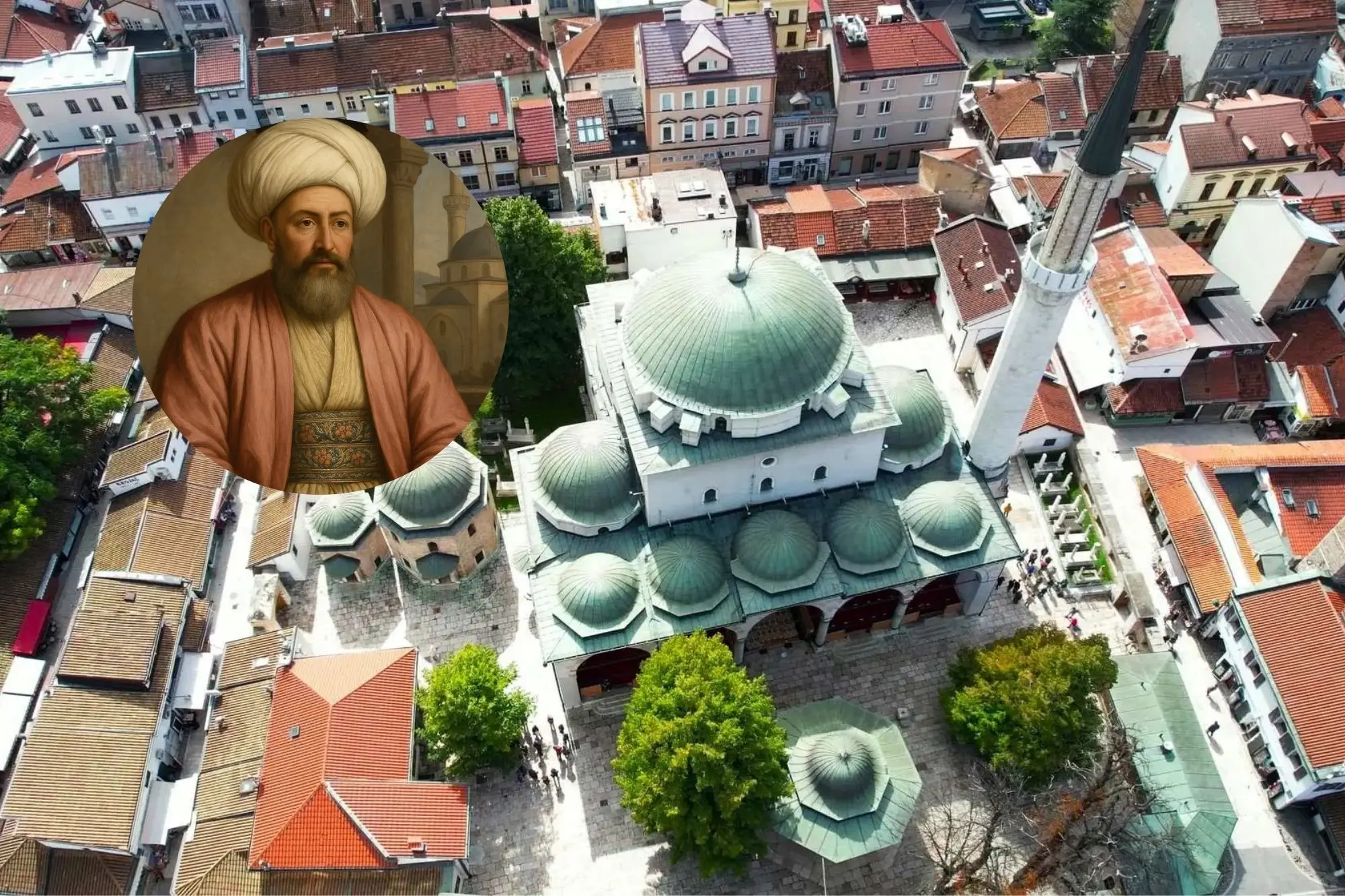
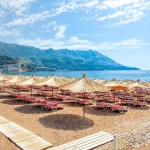

Leave a Reply